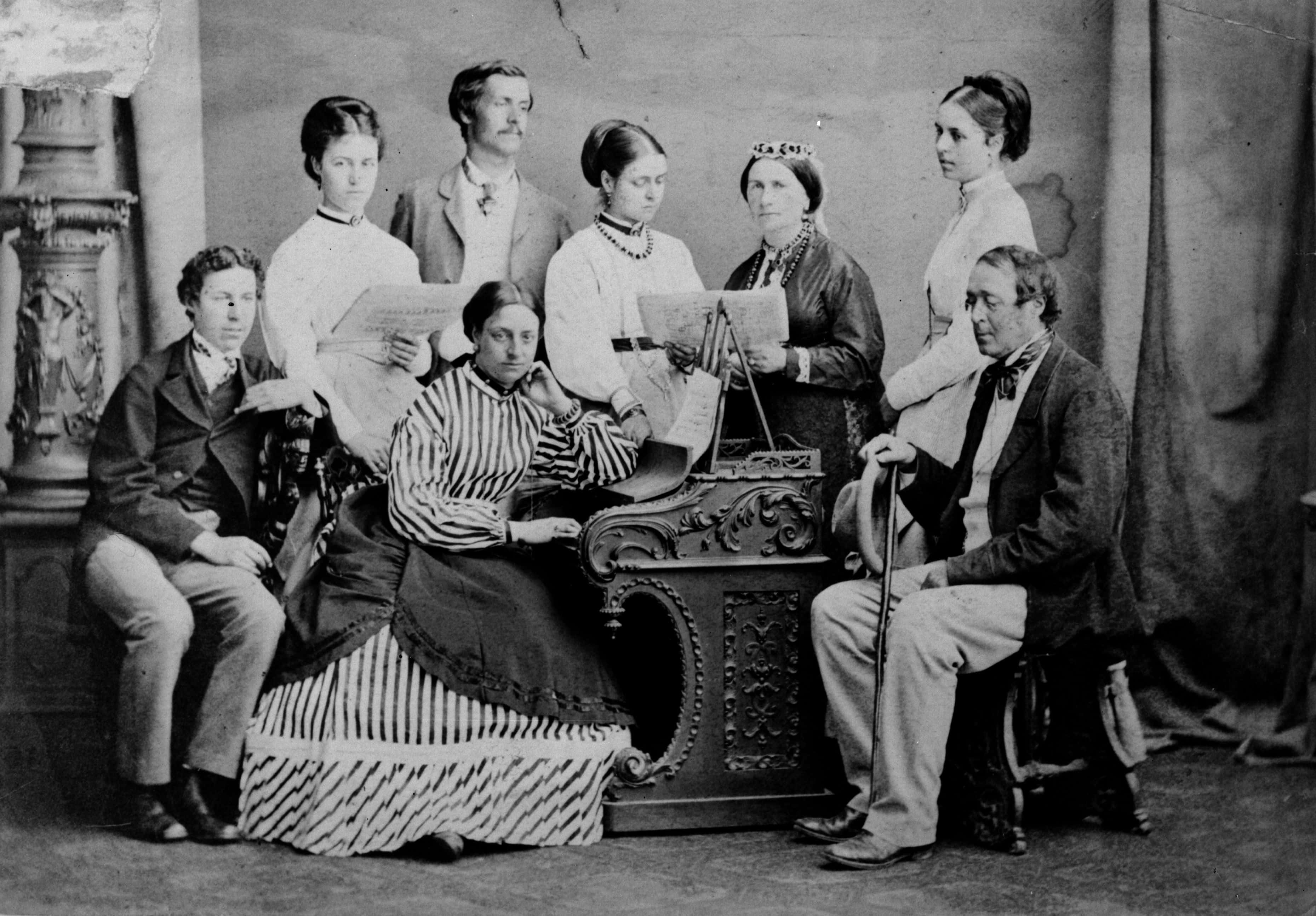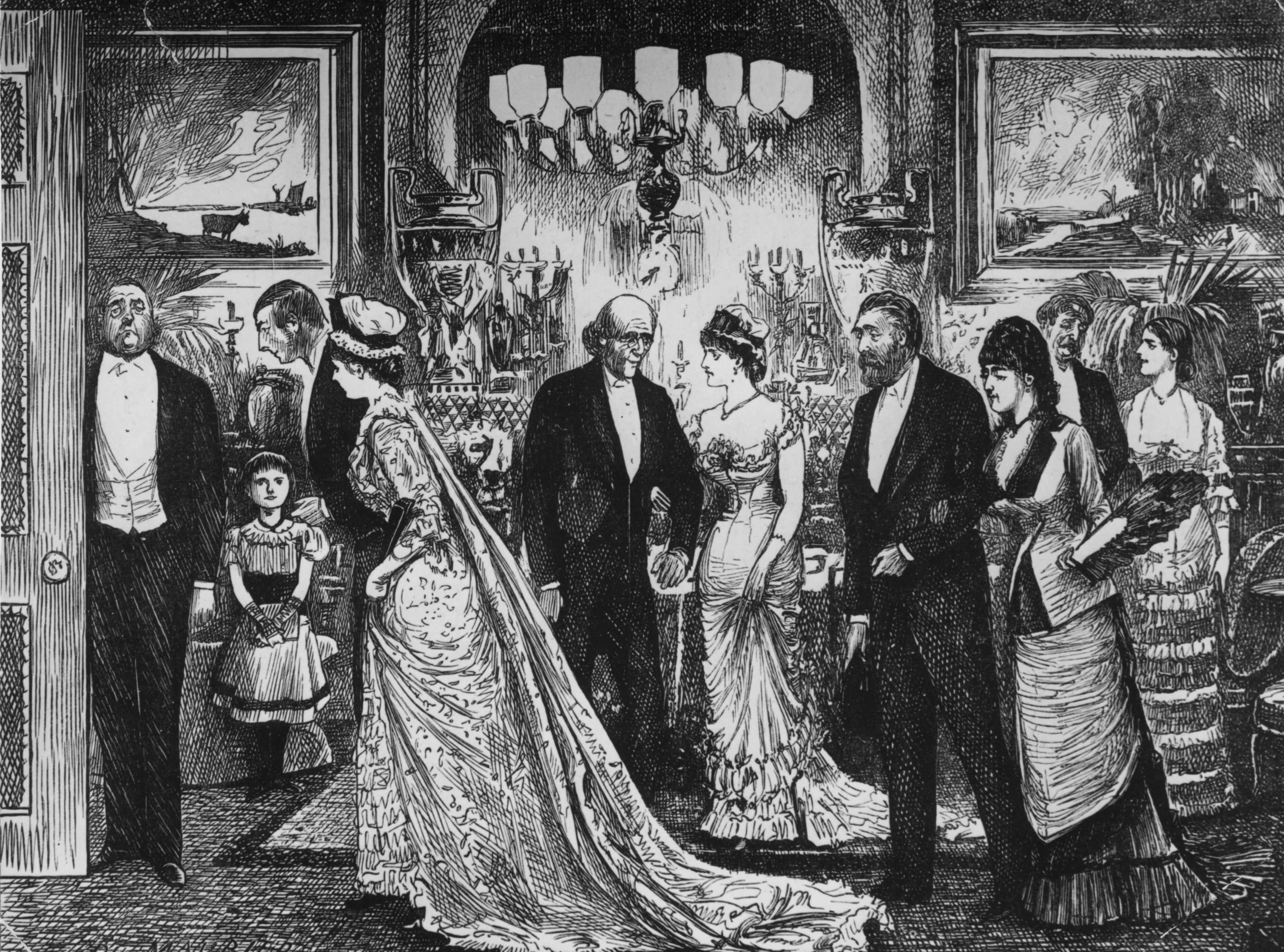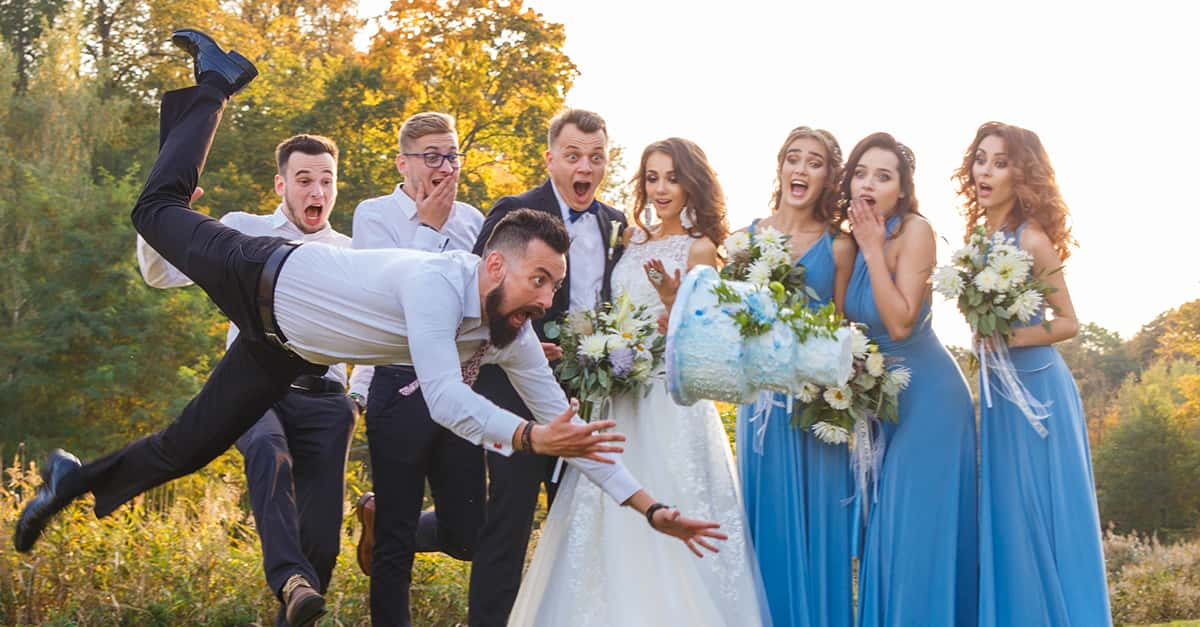“Don't forget to speak scornfully of the Victorian Age; there will be time for meekness when you try to better it. Very soon you will be Victorian or that sort of thing yourselves; next session probably, when the freshman come up.”― J.M. Barrie, Courage
The Victorian Era was a period of transformation for the British people. Their society was prosperous and innovative, but also subject to rigid social constructs. During Queen Victoria’s reign, from 1837 until her death in 1901, there were also a number of political and economic changes. Below are 44 proper facts about the Victorian era.
44. Working in the Coal Mines
Working children were common in the Victorian era, largely because poor families didn’t earn enough for food without it. One job that had high demand for children was work in the coal mines. Children made excellent coal miners because they could maneuver in tight spaces, and they required far less pay than adult workers. The children would work for 12 to 18 hours in air saturated with coal dust, and there was constant danger. Other jobs included chimney sweeping (where children could start working as young as 3) and working in factories or textile mills. In 1891, the National Society for the Prevention of Cruelty to Children was formed, offering some protection to child laborers.
43. Water Cure
Hydrotherapy was the practice of using baths of hot or cold water to cure what ails you. Seeing the enthusiastic response to this “medical” trend led many doctors who catered to wealthy clients to open their own hydrotherapy clinics. The water cure, as it was known, was used to treat anything from baldness to hysteria.
42. Bosom Rings
For a lady to have pierced ears was nothing unusual, but in the late Victorian era, nipple piercing became a fashion among more stylish and daring women. Generally, gold rings were used for the piercing, and if both nipples were pierced, the rings might be joined with a chain. Perhaps the popularity of this practice came from the idea that the rings would make the breasts grow and correct their shape. Of course, there is also the possibility that the wearers of this trend simply found it pleasurable.
41. Street Meat
Street vendors of the Victorian age sold some unusual foods. One popular delicacy was sheep’s feet, which were sold hot or cold. They were called trotters, and could be purchased at a low price from slaughterhouses, so vendors would buy them and prepare them at home by skinning and parboiling them, before selling them to workers in the street. Customers would then suck the meat and fat off the bones.
 Writers in London in the 1890s
Writers in London in the 1890s
40. Modesty Boards
We’ve all seen parodies of “racy” Victorian photographs, where a woman shows off a single ankle. Well, showing even a tiny bit of skin was taboo, and necessity is the mother of invention. Thus, modesty boards were created. These boards would be nailed or propped up close to the ground to ensure that women’s ankles were not visible when they were seated.
39. The Right Time of Day for a Visit
As mentioned before, the Victorian era was home to some of the most rigid social codes in Western history. This extended to all areas of life. When women would plan to visit their friends and acquaintances, it was referred to as “paying calls,” and could only be done in the afternoon. To pay a call at any other time was an incredible show of bad manners, as was overstaying your welcome. Like an intricate board game, if someone else came to pay a call while you were at someone’s house, you would gracefully exit, lest you be considered rude.
38. Seeking Life on Mars
Buttoned up as they were, the Victorians also believed that there was life on Mars. Giovanni Schiaparelli, an Italian astronomer, claimed that he had seen artificial waterways on Mars through his telescope. That must’ve been some telescope! Apparently, these canals were evidence that extraterrestrial beings on the red planet were attempting either travel or commerce. These ideas were generally quite popular and taken seriously by the public, and surprisingly, people would leave money in their wills dedicated to attempts to make contract with extraterrestrial life.

37. I’ll Have a Beer With That
Now here’s something we can get behind: Clean, potable water was hard to come by in Victorian society. It was generally polluted and considered more dangerous to drink than nature’s other perfect liquid—beer. Whether you were sick, pregnant, or just a child, beer was generally safer to drink than water, and so, you drank it. Hey, if I was seven years old and burnt out from a 12-hour day at the coal mines, I’d want a beer too.
36. Home Schooled
It’s hard to imagine, but there were no public schools as we know them during the Victorian era. As long as lower-income families were sending their children to work at a young age, they just weren’t needed. While free church-run schools existed for these families, they often couldn’t afford to have any member of the family not working at any given time.
In rich families, boys would be sent to expensive semi-private schools where they would learn Latin and Greek, and would be prepared to follow in their father’s footsteps, as leaders of their communities. The daughters of rich families wouldn’t be sent to school at all, and were taught at home by the governesses. By the end of the Victorian era, the government recognized that working people needed education, and made school mandatory for children until the age of 13.
35. Multiple Inkings
Though modern-day royals are unlikely to have many or any tattoos, in Victorian times, it was common for the nobility and aristocracy to have multiple pieces of artwork tattooed on their bodies. It all started when Queen Victoria’s son, the Prince of Wales, was visiting Jerusalem. He saw someone getting a tattoo and decided to get one of his own. He started a huge trend, and some estimates say that almost 100,000 Londoners got tattoos after news spread about his new tattoo when he returned home.
34. Meat Masks
Was it Lady Gaga’s inspiration at the 2010 MTV VMAs? Or a stinky proto-version of today’s most popular beauty fad, the sheet mask? Either way, it’s proof that beauty writers have been leading us down some interesting and experimental paths all in the name of beauty since the Victorian era. One columnist suggested binding slices of raw beef to the face at night, in order to prevent wrinkles and promote a youthful, radiant complexion.
33.The Boy in the Dress
Sure, we now know that pink and blue clothing for girls and boys are relatively recent developments In terms of clothing and how it contributes to gender constructs. But in the Victorian era, all genders of children would be clothes in frilly white dresses until they reached school age. And the richer a family was, the more bells and whistles (a.k.a. ribbons, bows, lace and buttons) the dresses would have. Both genders would also wear bonnets.
32. Hell on Earth
Despite its innocent-sounding name, Angel Meadow was a Manchester slum that was so rough, overcrowded, and terrible to live in that it was nicknamed “hell on earth”. Within one square mile, approximately 30,000 Irish immigrants lived, and children were generally left to fend for themselves, where they would scavenge for food, and purportedly, catch and eat stray cats.
31. Glutton Club
Nose to tail eating isn’t just a recent food trend. Perhaps in pursuit of his study of the theory of evolution, Charles Darwin himself had a strong interest in eating animals—the rarer, the better, and we don’t mean how the meat was cooked. As a member of a Cambridge Society called the “Glutton Club,” Darwin chowed down on hawks, squirrels, maggots, and owls. And that’s just when he was home! When he went on an expedition, he also had to chance to eat iguanas, giant tortoises, armadillos and a puma. And here I thought I was adventurous trying oysters.
30. Charcoal and Honey
Since toothpaste didn’t exist in the Victorian Era, people would clean their teeth with homemade "dentifrice"—a French word for toothpaste. One of the recipes was a mixture of charcoal and honey, which actually would make an amazing face mask. They were just a little mixed up!
29. Widow of Windsor
Queen Victoria has much better excuse than I do for only wearing black for the last 15 years or so. When she lost her husband Albert in 1861, the Queen went into immediate mourning, and wore black for the next 40 years until her death. During this extended mourning period, she generally lived in seclusion and didn’t attend public events, earning herself the nickname the “Widow of Windsor.” Ironically, Victoria disliked black at funerals, and ensured that the streets of London were decorated in purple and white when she died.
28. Au Naturel
Makeup was considered gauche for a society woman to wear, as it was used mostly by prostitutes. One judge even proclaimed lipstick to be similar to witchcraft, in that it had the ability to seduce men. If you were a society woman, you would probably pinch your cheeks in an attempt to give yourself a glow, and you might use cold cream to appear youthful and dewy. If you felt risqué, you might apply the tiniest amount of rouge to your cheeks. I’d rather live in a society with a Sephora any day.
 Youtube
Youtube
27. Shocking the Problem
Electrotherapy, or shock therapy, was used as a treatment for multiple medical problems, including gout, muscle pain, rheumatism (arthritis), and liver problems. What was the complicated medical science behind this? It was about as intricate as trying to scare the hiccups out of someone by yelling “Boo!” Essentially, the hope was that applying electricity would shock the problem out of the patient.
26. Fitness Fanatics
The gym rat is, surprisingly, not a 20th century invention. As you can tell from all the superstitions and practices around beauty and health, they really cared about achieving a physical ideal. And, much like the current day, it was often those with the most money that had the most time to spend working on themselves. Bodybuilding was a hobby of the elite, as were fad diets and taking up new exercise trends. Nearly 200 gyms, or fitness centers, proliferated across Europe to meet the demand for physical perfection.
25. Newfangled Machines
The Victorian era was a great time of invention, including many that we still use today. Guglielmo Marconi came up with the radio in 1895. In 1876, Alexander Graham Bell invented the telephone. Other notable inventions included the camera, the television, the vacuum, the train, the stamp, and most importantly: the toilet.
24. Bottling Tears
It wasn’t just Queen Victoria mourning her husband—mourning was a serious business in the Victorian Era. Beautiful, elaborate mourning jewelry would be created for women in mourning, which would incorporate onyx or jet (both black stones) and braided hair from the deceased. Tears cried for the deceased would be collected in bottles, and if you were a bachelor who didn’t leave a widow behind, you could always hire a local blonde woman to wail at your grave and make it seem like you were adored.
 Latest Stories - National Geographic
Latest Stories - National Geographic
23. Mummies Were In
We have the Victorians to thank for those huge Egyptian wings filled with impressive artifacts that can be found in so many modern museums. In the early 1900s, Egyptology was the most popular branch of archaeology, which was still in its infancy. The Victorians were obsessed with the fascinating artifacts brought back from dug-up tombs, and mummies were often unwrapped and put on display. If you organized a lecture or exhibition centered around the subject of ancient Egypt, it would be a guaranteed hit in Victorian society.
22. Talking to Dead People
On top of believing in aliens, Victorians were also strong believers in hypnotism, divination, and spiritualism. It really sounds like society women just needed hobbies, honestly. Events were attendees could be hypnotized, speak to the dead, or have their futures predicted were extremely popular, and hucksters would make huge money off of bored Victorians.
21. Curious Collections
In the Victorian era, collecting was a major part of the people’s lives. Collections often included "curiosities" such as zoological, botanical or geological finds. Shrunken heads, seashells, antique weapons and clockworks were commonly collected items. These collections would be displayed in a large “cabinet of curiosities.” If you wanted to expand your collection? Just go to the curiosity shop. Just like the spiritualists, many of the items were fake. Hobby game: weird.
20. Pelvic Finger Massage
Many women of the Victorian era suffered from “hysteria,” which was really just a catch-all name for anything that bothered them. Depressed? Hysteria. Irritable? Hysteria. Anxious? Hysteria. Just having a bad day? Hysteria. How could you cure this horrible ailment? Well, with a “pelvic finger massage” which would cause “hysterical paroxysm.” That is to say, having a doctor use his hands to cause orgasm. Another extremely strange by-product of a sexually repressed society.
19. Electric Stimulator
Maybe it was their own fault for diagnosing basically every problem a woman had as hysteria, but either way, doctors could only perform so many “pelvic finger massages” a day before presumably beginning to suffer from Carpal Tunnel Syndrome. As a result, the vibrator became the fifth home electronic invention ever created. It preceded the electric vacuum cleaner, the electric iron and the electric frying pan by nearly a decade. In the early 1880s, Mortimer Granville invented the first battery-powered vibrator. The original battery weighed 40 pounds, but towards the turn of the century, it shrunk, and women began purchasing it at home. The sexual function of vibrators was generally ignored until they began to be used in stag films in the 1920s, and then they became an item to be hidden.

18. Dangerous Games
Parlor games were extremely popular with Victorians, especially at Christmastime. One game was called “Snapdragon,” during which a bunch of raisins were put into a bowl with rum and set on fire. The object of the game was to get the raisins out of the bowl and eat them while they were still on fire. Whatever floats your boat! Some games from that era which were simpler and safer are still played today, like charades, and an early version of musical chairs.
 Youtube
Youtube
17. London Fog
It’s not just your favorite Starbucks drink! Due to a lack of regulations on industrial pollution, smoke from the factories, coal pollution, and moisture from the Thames river combined t create a thick, toxic smog which spread over the city. Anyone and anything would spent any time out and about in London would inevitably be covered with the sooty by-product of the fog, so buildings were often stained, and black became the color of choice for clothing.
16. Stuffed Kittens Having a Tea-Party
Yet another weird hobby, taxidermy, the practice of stuffing dead animals, was extremely popular in the Victorian era. And what would you do with all your small taxidermied friends? Why, create an anthropomorphic tableau of course. The ‘stuffed’ animals would be dressed in tiny human clothing, and would be posed in dioramas recreating human activities. One of the most well-known artists of the time was British taxidermist Walter Potter, who created scenes of rabbit schoolchildren, cigar-smoking squirrels, and kittens having a tea-party. Without him, we may have never got to see The Bachelor’s Arie fall in love with Kendall over a tableau featuring two taxidermied rats recreating their romantic Paris kiss.
15. Poor, Wealthy, Rich
Victorian society had three main classes. There were the upper class, the middle class, and the working class. After the Industrial Revolution, the gap between upper and middle class narrowed, and many middle-class households were considered wealthy.
14. Not a Good Time to Get Sick
Tuberculosis was the leading cause of death from sickness in the Victorian Era, and instead of being treated in hospital with medication, the only treatment to be had was in workhouses. If you were lucky enough to have an illness that could be treated in hospital by surgery, you would have to go into the operation completely awake and fully present, as there was no such thing as anesthesia or painkillers.
13. Dining in the Dark
Victorians believed that digestion could be aided by sitting in the dark, and so, dining rooms were built in the basement, close to the kitchen. At least they got to eat the food that they could barely see hot! In later years, the room was moved to the first floor, but based on knowledge gleaned only from Downton Abbey, servants still took their meals in the basements.
12. Strange Side-Shows
Another common form of entertainment in the Victorian era was the freak show. Fueled by the Victorian interest in physical oddities and the peculiarities of death, touring freak shows were attractive and exotic. The showmen of these shows worked hard to make a name for themselves, and P.T. Barnum was seen as the most successful showman of his time. Paraphernalia from the shows also became popular, and "freak trading cards" were incredibly successful.
11. Bottomless Bottoms
Women’s bloomers were the base layer of every outfit, but they were designed to only cover the leg, and not the part between the legs. Dresses served the function of keeping everything covered, since they were so heavy and elaborate. This bloomers design allowed women to use the toilet more easily.
10. Fasting Fad
Another Victorian fad? Fasting. “Fasting girls” could supposedly live every day without touching food or water, and made their “air diets” a fashionable practice. This drew a lot of attention and popularity to them, but obviously, they were gorging in secret. One popular reported case was that of Mollie Fancher, who claimed to have survived for 14 years without eating.
9. Seen and Not Heard
The expression “children should be seen and not heard” originated in the Victorian era, and referred to the way that the children of affluent or upper-class families were expected to behave. Upper class children were rarely in contact with their parents, and were mostly raised by a nanny. They were expected to be proper and polite, and they were not allowed to be loud.
8. Going to the Crapper
You can’t make this stuff up. By 1870, thanks to Thomas Crapper, most wealthy homes had an indoor water closet, but otherwise, they were far from the bathrooms we use today. Taking a bath involved a maid dragging buckets of hot water up the stairs to the tub, but by the time it got there, it was usually cold. Due to the Victorians’ belief that exposure to cold caused illness and possibly death, sponge baths and perfumes were a far more common way of eliminating or masking body odor.
7. Newspapers are Good for Your Health
As you can tell by their disdain for cold water, doctors in the Victorian era were frequently making huge guesses and leaps in logic when it came to preventative care. In 1875, one suggestion for preventing the onset of pneumonia was to cover yourself in sheets of newspaper. This would give the user a warm and comfortable night’s sleep and keep them from getting sick.
6. Don’t Drink the Water
By 1860, the Thames River was full of the raw fecal matter and sewage that was being dumped into the water on a daily basis. Since the river was also the main source of drinking water for the city, people died by the thousands from dysentery, cholera, and typhoid. Once again, a great excuse to opt for beer.
5. Swooning Susan
Fainting was common among Victorian women. Corsets made from whalebone, and sometimes even iron or steel, helped women achieve the impossibly tiny waists that were fashionable at the time. A side effect of these binding garments was that circulation would be cut off, and women would have trouble breathing. It was thought that women were prone to fainting from excitement, but really, it was that they would momentarily pass out whenever their heart rates increased as a result of having their midsections bound so tightly.
4. Consuming Poison
In the Victorian era, arsenic wasn’t regarded as a poison in the same way it is today. Women would apply it topically as an age-fighting cosmetic, and men would take arsenic pills to get their engines revving—that’s right, it was basically used as Victorian Viagra. I guess doctors were too busy performing hydrotherapy and performing pelvic finger massages to notice the problem, and it took many cases of illness and quite a few fatalities before they figured out that arsenic was toxic.
3. Death Photographs
It was common in the Victorian era to have photographs of loved ones taken after they died. Families would pose with the dead, children would seem to be sleeping, and young ladies were photographed in a reclining position. This practice was especially popular with children who died, and was seen as a last chance to have a permanent likeness of the child. As healthcare improved, and life-expectancy grew, death photography gradually diminished in popularity.
2. Keeping Curry Handy
Queen Victoria hated spicy food, but as the Empress of India, she demanded that curry be kept available at all times just in case a "visiting oriental" turned up. It was hardly what they might be used to at home though, as it was basically a mix of already cooked ingredients with curry powder dumped on top. I actually think I had something similar at a mall food court last week.
1. Victorian Porn
Despite their buttoned-up exterior, Victorian gentlemen loved hardcore erotic literature and photographs. They could purchase it secretly from under the counter of certain vendors, and the variety of material rivaled the number of genres you could find on any modern porn site.
Sources: 1, 2, 3, 4, 5, 6, 7, 8, 9, 10, 11, 12, 13, 14, 15, 16, 17, 18
















































